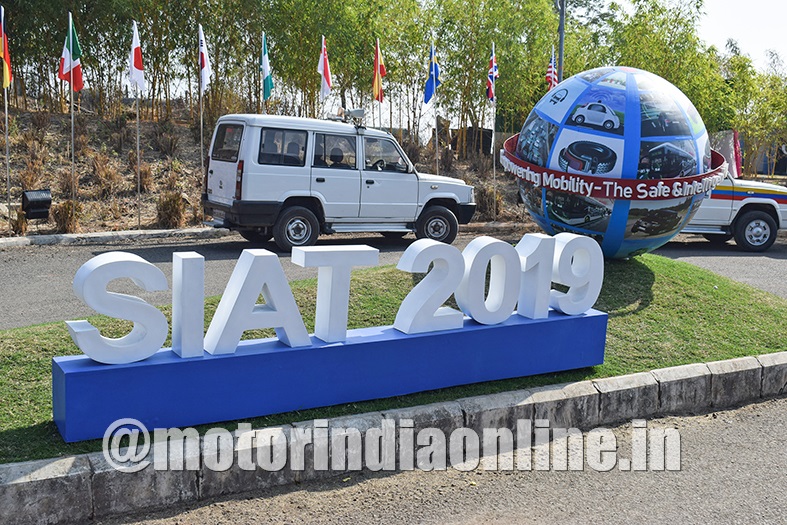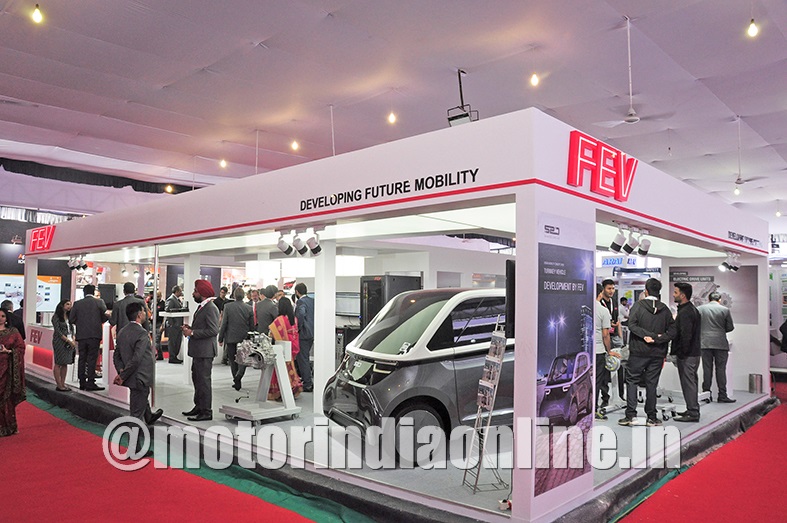Suppliers flex tech muscle
A hill-top overlooking many hectares of Greenland in Bavdhan, Pune, close to Mumbai-Bangalore Highway, became home to the 2019 edition of the Symposium on International Automotive Technology (SIAT) organized by the Automotive Research Association of India (ARAI). Held between January 16-18, SIAT 2019 proved to be a confluence of familiar, novel and the technical. The three-day biennial event, that has become an important technical forum for exchange of ideas and brainstorming for the automotive industry, didn’t disappoint one bit in its 2019 edition.
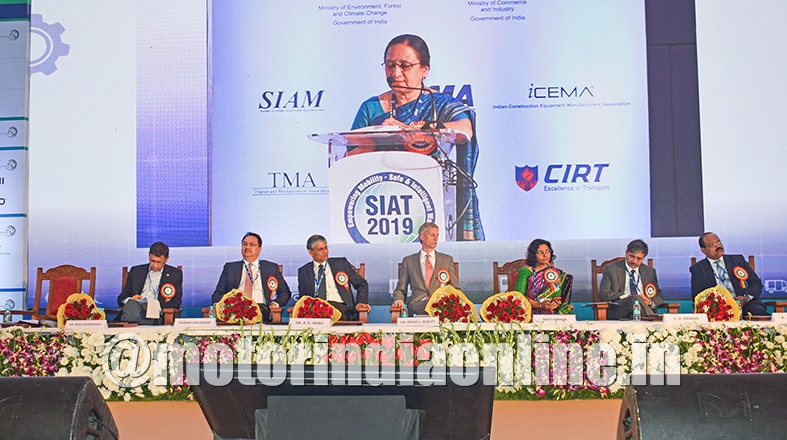
The show was inaugurated by Dr. A.R. Sihag, Secretary, Ministry of Heavy Industries and Public Enterprises, in the presence of Dr. David L. Schutt, CEO, SAE International, Dr. Bala Bharadvaj, M.D., Boeing India Engineering & Technology Centre, and President, SAEINDIA, Mr. Vikram Kirloskar, ARAI President, Chairman, SIAT 2019 Organizing Committee, and Vice Chairman, Toyota Kirloskar Motors Pvt. Ltd., Mr. C.V. Raman, V.P., ARAI, and Sr. Executive Director, Engineering, Maruti Suzuki India Ltd., Ms. Neeti Sarkar, CEO, NATRiP, Mrs. Rashmi Urdhwareshe, Chairperson – SIAT 2019 Advisory Committee, and Director, ARAI, and Mr. A.A. Badusha, Convener, SIAT 2019, at Oxford Gold Resort at Bavdhan.
Mr. Vikram Kirloskar said: “The Government can help the industry to bridge the gap between technology development and regulatory framework and create an enabling eco-system. The forthcoming changes such as the move to BS-VI emission norms or crash sustaining standards has created many opportunities for new product development for the industry.”
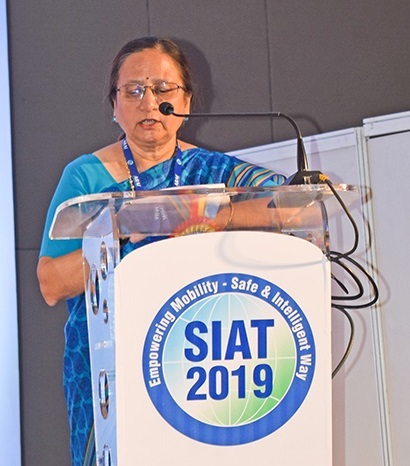
Dr. Bala Bharadvaj believed: “There should be an effort to expand the outlook towards the automotive industry because future vehicles will combine features of many equipment of mobility. There are many parallels between the working of automobiles and airplanes and serious efforts to make flying automobiles or automobiles on par with aircrafts are on.” Observed Mr. Bharadwaj, who is Managing Director of aerospace giant Boeing’s India Engineering & Technology Center.
Earlier, in his address, Dr. Sihag said: “The Government is working as a facilitator to help accomplish India’s “3/12/65 vision” as stated in the Automotive Mission Plan 2016-26 by creating supportive infrastructure for testing, homologation and research and development for the industry. The mission envisages to take the Indian automotive industry in the world’s top 3, increasing contribution of the industry to the country’s GDP to 12 per cent and reach a landmark of employing 65 million in the industry.”
Mrs. Urdhwareshe, offered an overview of the three-day conference. She said: “During the event, over 200 technical papers, including 40 keynotes, on various subjects will be presented by renowned experts and technical reference bulletin, containing technical articles, case studies and product information, will also be published.” Mr. Raman proposed a vote of thanks.
SIAT along with the SIAT Expo attracted participants from all over the world, focused on recent advances in various automotive areas such as safety, emissions, noise, electric mobility, intelligent transportation, alternate fuels, simulation and modelling. It brought innovative ideas and solutions to the fore to meet future challenges. Presenting a few of them in this elaborate feature:
AVL’s measured solutions for Indian market
Indian passenger car, truck and bus manufacturers are currently driven by the upcoming introduction of Bharat Stage VI (BS-VI) legislation for internal combustion engine propelled vehicles. In parallel, discussions are ongoing about how the future mobility will look like. These discussions are driven by the ongoing global warming as well as by the pollutant situation especially in Indian metropolitan areas.
Said Mr. Bernhard Raser, Product Manager, Commercial Vehicles On-Road, Engineering and Technology Powertrain Systems, AVL LIST GMBH. “BS-VI will lead to a significant step forward when it comes to the reduction of exhaust pollutants. With the introduction of WHTC as one of the emission test cycles, also cold start emissions have to be considered. Additionally, the emissions of the vehicle under real world operation have to be measured and the results have to be transmitted to the authorities. These measurements will be the base for the future conformity factors which will be in place for commercial vehicles in 2023.”
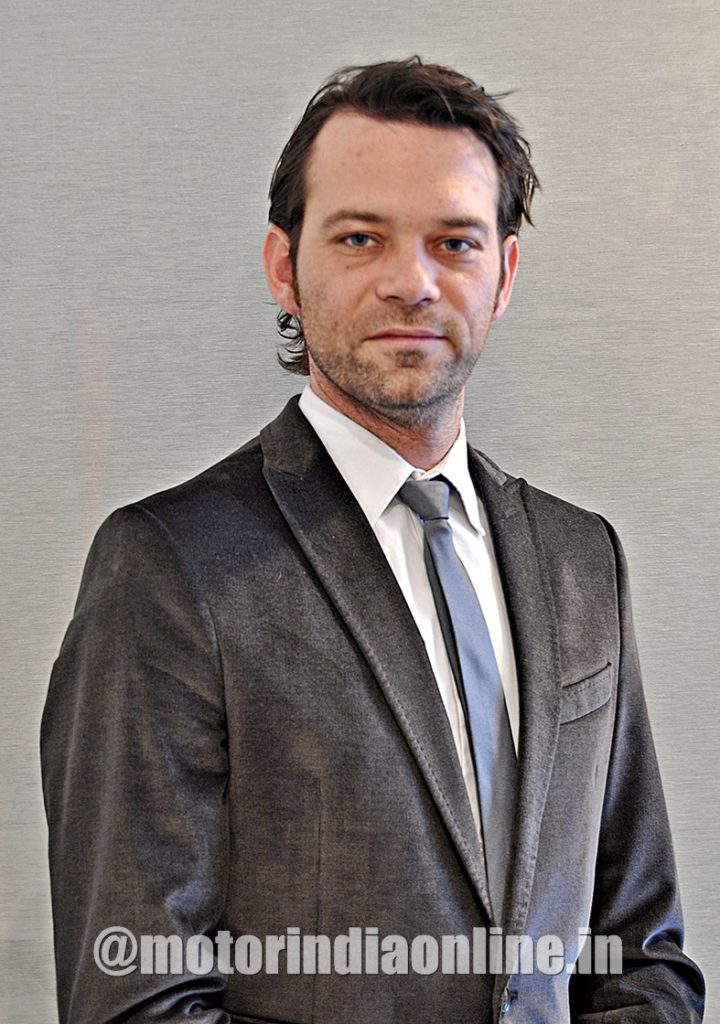
In order to comply with these emission requirements, the system’s complexity of a Bharat Stage VI engine increases; especially when it comes to the exhaust aftertreatment system. In parallel, the world wide harmonized On-Board-Diagnostic requirements are being introduced to ensure the proper functioning of these measures over lifetime. All the before mentioned legislative requirements lead to a significant workload for the Indian OEMs. “AVL is able to support during the entire development and product lifecycle. From the initial technology decision, during the design phase, supplier selection, calibration and certification until the fleet validation. AVL has more than a decade of experience when it comes to utilization of virtual engine calibration and can therefore ensure product quality and cost achievement due to application of AVLs quality gate process,” informed Mr. Raser.
AVL has been observing that the goods and people transportation are a very cost sensitive sector. Driven by the legislative future CO2 targets, OEMs will have to set up their future commercial vehicle portfolio. Additionally, improvement of air quality in cities is needed. With the application of battery electric vehicles local CO2 and pollutant emissions can be eliminated. In order to covert longer transport distances, a high amount of energy is required.
This leads to a significant reduction of the possible payload for battery electric vehicles. Therefore, the required range will limit their application. Fuel cell technology increases the operation range of Electric vehicles significantly, especially due to the short refueling duration.
According to Mr. Raser, traditional combustion engine-based powertrains with low emission levels will still be the backbone of long-haul transportation, especially due to the lower system costs and their high range. “In the future we will see different degrees of hybridization. This can be electric driven auxiliaries or full hybrid powertrains. Hence, there will be a broad technology mix which connects the benefits and strengths of each powertrain technology,” he said.
On what trends do AVL see in India and their preparation for various power train options, Mr. Raser expressed: “Vehicle manufacturers need to respond to that with a complex powertrain portfolio in the future. Currently the transport sector is at crossroads worldwide. To make the paradigm change to electric mobility possible, the required infrastructure is needed. It will depend on how quick India is able to ensure the charging infrastructure or the hydrogen infrastructure before battery or fuel cell electric vehicles can be a possible transport solution. Until this time, internal combustion engines will remain the backbone of India’s transport industry. These ICE propelled vehicles will not necessarily use fossil diesel fuel. Alternative fuels like gas or fuel out of renewable sources could substitute traditional diesel and contribute to the reduction of CO2. AVL is already prepared to face the entire width of possible propulsion systems. Next to the long history of traditional powertrain, AVL has already invested in R&D programs as well as in test facilities, and is well-prepared to be the development partner for future propulsion systems.”
FEV’s wide-range of engineering services for Indian requirements
Considering the roadmap for BS-VI in India by 2020, FEV India has put a step forward by adding eight more BS-VI capable engine test benches in addition to existing 8 test benches. FEV who has always exceled with respect to the market requirements, has started PEMS measurements for upcoming RDE regulations post 2020. The company is also working on new concept development for OEMs in affordable hybrid powertrain to meet future CAFÉ & emission legislation norms.
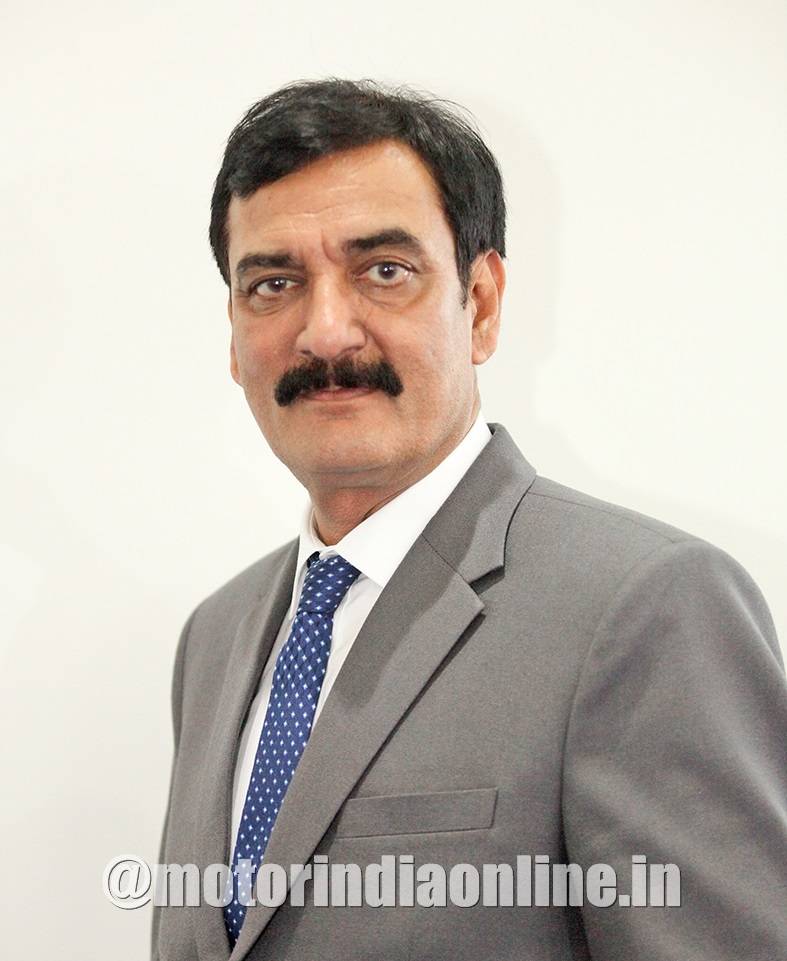
Speaking to MOTORINDIA, Mr. Sushil Berry, Managing Director, FEV India, said: “Being a technical supporting arm to the Indian OEMs, we are closely working on right approach for OEMs towards BS-VI development with continuous feedback and brainstorming sessions. We are closely working with OEMs for BS-VI turnkey projects involving complete development of new engine families compliant to BS-VI regulations.”
Ask him about FEV’s development for Hybrid / mild Hybrid and Electric vehicles, Mr. Berry elaborated: “In India, we are working in collaboration with various OEM’s in electrification of powertrains. It includes technologies like e-booster, advanced stop-start and alternator control, e-axle, full plugin hybrids including series hybrids for commercial applications. On the EV front, FEV India team has developed complete indigenous powertrain solution that can be scaled for different applications including, 2-wheelers, 3-wheelers and light commercial vehicles. FEV India is continuously supporting on vehicle prototyping and demonstration applications as well as consulting new entrants and startups on various electrification challenges.”
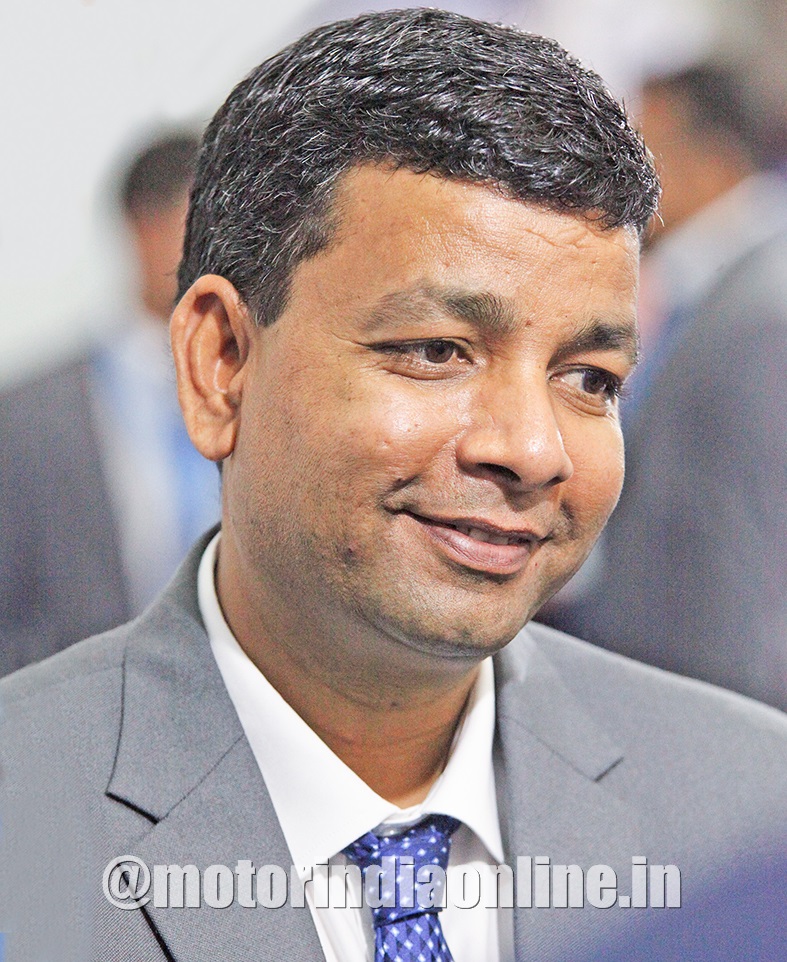
Technical Director, FEV India
FEV booth at SIAT attracted visitors for the eye-stopper SVEN. Revealing further information on the attractive vehicles, Mr. Vijay Sharma, Technical Director, FEV India, informed: “The three-seater SVEN electric car is based on cooperative research between the Aachen University of Applied Sciences, share2drive, and FEV. As an emissions-free, purely electric-driven car sharing solution, SVEN should close the gap between personal and public transportation. Only 2.5 meters long, the three-seater vehicle is extremely compact. This enables it to park diagonally, meaning, it will fit into practically any parking space. At the same time, the vehicle fulfills the highest safety standards in the event of a crash due to its applied Flex body. Emphasis was also placed on simplicity of operation: only eight buttons are needed for the intuitive operation of the vehicle. In addition, the user will have the opportunity to customize the vehicle to a large degree. With the help of an MLA projector, information, such as the current charge status of the vehicle, can be projected on the floor.”
The SVEN, according to FEV, can be upgraded with autonomous capabilities. FEV plans to showcase this EV at the Geneva Show 2019 next month, following which the company plans to begin commercial tests. The company’s India team has been part of the compact EV’s development. Interestingly, at SIAT 2019, the company has received enquiries for a six- and a nine-seater variant from Indian OEMs.
Automotive Test Systems: One source destination for all testing needs
Known for its collaboration with many European and US-based companies in the area of sales, service of test instrumentation, system rentals and providing end of line testing & technical services to many OEMs as well as companies like AVL, FEV, etc.; Automotive Test Systems (ATS) participated at SIAT showcasing might of all its group companies.
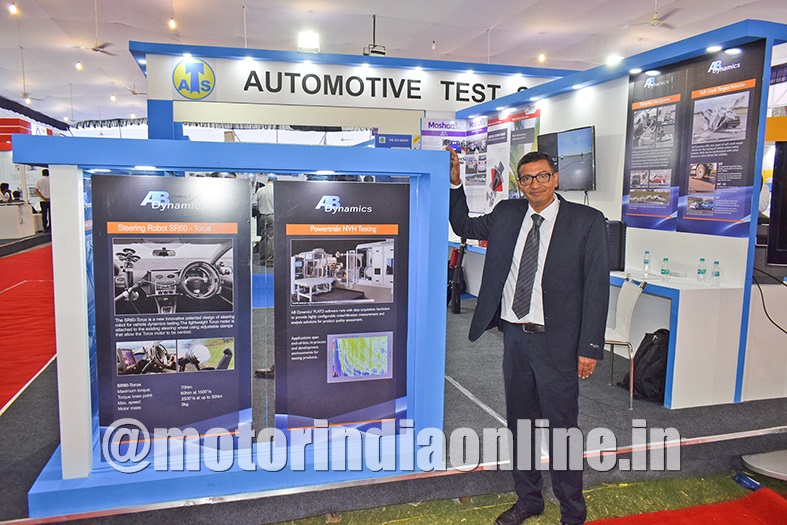
We caught up with Mr. S. Ramanathan to know more about their recent collaborations and the products displayed at SIAT. He said: “We acquired Pieseler last year, who has been quite an old player in providing sensors for brake testing typically like fifth wheel to measure the wheel speed. We bought Peiseler and have been upgrading it with the latest technologies. There has been new development in which we will add value along with them in areas of like fuel flow meters, height sensors, data loggers and other software’s for vehicle testing and ADAS. We have a strong internal software team and from them we get a good support on the hardware. Going forward the idea is to do a lot of development here in India, in order to bring down the cost and use the facility there in Germany for precise manufacturing, maintain quality and sell it world-wide from Germany.”
ATS has a full-fledged team – R&D in Coimbatore and system development in Chennai. “We had started working on the product development even before this acquisition, around 2-3 years back under the ATS brand. We will be developing similar products under Peiseler brand with better quality and features from India. We also have a big engine testing facility at Amrita University, Coimbatore where we do test and talk about engineering and evaluating engine performance like NVH, emissions, different loads, fatigue life, etc.,” informed Mr. Ramanathan.
Ask him about the solutions ATS offer for impending BS-VI emission norms and the trends that they observe in the industry, Mr. Ramanathan added: “Customers are looking at reducing fuel consumption and hence I have seen the demand for our fuel consumption meters increased by 10 folds in the last 6 months because of BS-VI. Apart from this emission testing equipment’s, e-mobility and ADAS are driving the business at the moment. Many companies in India re working for OEMs abroad but they are developing driverless cars for them, so ADAS systems are also the current trends and we support Indian companies, particularly a lot from Bangalore with tools and validation.”
At SIAT the company showcased products and solutions ranging from test rig developments, environmental chambers, electric / hybrid vehicle battery testing, power train and emission testing, simulation solutions to passive and active safety.
BorgWarner’s extensive portfolio for Combustion, Hybrid & Electric (CHE) powertrains
As always SIAT proved a vital platform for BorgWarner to showcase existing as well as new developments. When MOTORINDIA interacted with Mr. Sudhir Kumar Chawla, M.D., Emission & Thermal Systems India, BorgWarner, he said: “This year we are highlighting our expertise in CHE, which is Combustion, Hybrid and Electric solutions. While people are speaking about electrification by 2030, they are also aware that it will be in tune of around 30 per cent. As far as BorgWarner is concerned, since we have the products, we are ready for any given time line. Our work will be to apply the products that we have for the Indian requirement. It will be premature to talk about numbers on the electric front but everybody is working, but hybrids are also the option that people will also have to talk about for passenger as well as commercial vehicles.”
According to Mr. Chawla, the need for hybrid and ramp up of electric vehicles in India will be driven by legislation. Among BorgWarner’s exhibits that furthered the theme of CHE were exhaust gas recirculation (EGR) technologies, the advanced exhaust heat recovery system (EHRS), variable turbine geometry (VTG) turbocharger solutions and variable cam timing (VCT) technology.
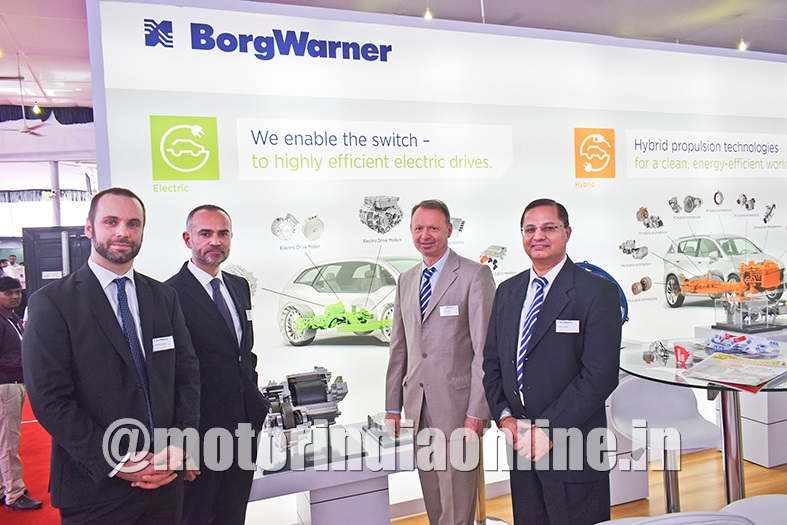
Mr. Pablo Freire, Director, Business Development Passenger Car, Emissions and Thermal Systems, BorgWarner, expressed: “CO2 reduction has been attempted in more than one way. One is of course to improve the internal combustion engine and the other is hybrids and electrification. The beauty with BorgWarner is that we have products to meet various approaches. Even by conservative yardsticks BorgWarner will sell roughly 6 million EGR systems for gasoline application by 2022-23. However, the next year or two will clear the picture in terms of major nations approach toward clean and efficient energies.”
It has to be noted that BorgWarner offers gasoline VTG turbocharging solution, which provides smooth power delivery and excellent response while improving fuel efficiency and lowering emissions, which is well-suited for the Indian market. The continued drive for fuel economy and the expected growth of the hybrid market share is driving the demand for clean and efficient turbocharging technologies. Diesel engines will become more efficient and cleaner with advanced VTG and regulated two-stage (R2S®) turbocharging solutions. The share of modern turbocharged, gasoline direct fuel injection engines is expected to grow, both for conventional and hybrid powertrains.
Mr. Kristoffer Nilsson, Supervisor, Advanced Engineering Electric Drive Modules, PowerDrive Systems, BorgWarner Sweden AB, believed that the platform like SIAT, help BorgWarner engage with customers from their designing stage and gives them a clear road map on how the requirements are shaping up. He added: “If it is about improving fuel efficiency in combustion engine, we have that. We also have products from mild-hybrid, which can be quickly implemented in the vehicles. On the e-mobility front, the we have EV Transmission, Electric Drive motors, Electric drive Modules, Power Electronics and Thermal Management solutions. Either technologies, we can support OEMs reduce CO2 footprint and improve fuel economy.”
BorgWarner, a global product leader in clean and efficient technology solutions for combustion, hybrid and electric vehicles, provides its customers with a broad range of advanced technologies. By covering four of the five main technology segments important for electric propulsion – electric motors, transmissions, power electronics and thermal management – the company is in a good position to support automakers in overcoming the challenges confronting them nowadays. “Our comprehensive know-how in the field of emissions reduction worldwide has enabled us to offer apt solutions in India, that will help OEMs master the challenges posed by BS-VI emissions standards and beyond,” expressed Mr. Chawla.
DEWESoft’s comprehensive vehicle testing capabilities
DEWESoft offers a wide range of supported interfaces for vehicle testing; like Analog, Digital, Counters, CAN, CAN FD, OBDII with pin-point synchronization between them. These solutions are for all kinds of vehicles, from passenger cars, autonomous cars, trucks, heavy machinery, ships and aerospace vehicles.
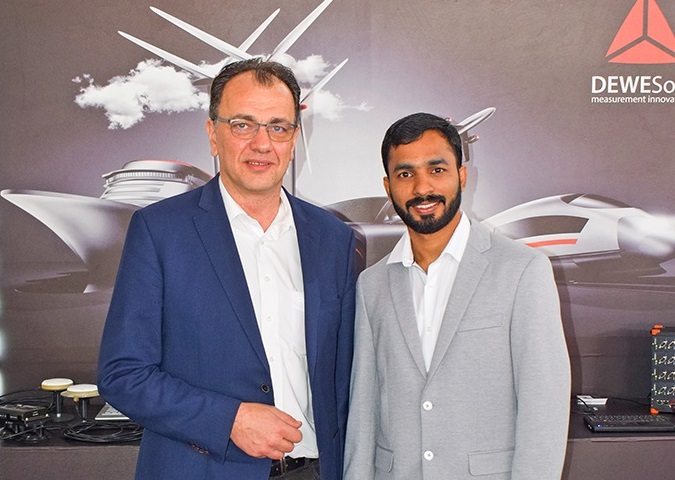
and Mr. Tirin Varghese, MD, DEWESoft India
At SIAT we got the opportunity to speak to Mr. Reinhold Fink, APAC Regional Manager, DEWESoft GMBH, and Mr. Tirin Varghese, Managing Director, DEWESoft India Pvt. Ltd. Mr. Fink said: “We are offering complete test systems for the electric vehicles, as it is certainly the future. We provide smaller systems that can be used inside the vehicle for the validation of the energy system. We can offer the solutions for engine as well as vehicle dynamics, in fact we have package for complete vehicle testing which can be enabled using the same instrument from the hardware and software side, as we are flexible in our installation.”
Mr. Varghese added: “We have the world smallest power analyzer for the electric vehicles measurement, and the temperature range for different temperature measurement, although the requirement will be different for different application, we can cover it in one product.” Having tasted success in countries like the US, Europe and China, DEWESoft has been catering to the Indian market through its Indian subsidiary. “We have opened our subsidiary here in India couple of months ago in Chennai with product support and sales. All the exports, marketing and demonstration activity are handled from Chennai. Once the instrument is manufactured from our site in Europe, we take care of the application here in India. In terms of the target, by 2020 we want all OEMs to make us their preferred supplier in ADAS, Brake Test, Combustion Analysis, E-mobility, NVH testing, Road load and overall vehicle dynamics,” asserted Mr. Varghese.
Infineon bullish on growth of sensors and semi-conductors
Infineon showcased an array of products for motorcycles, passenger cars and commercial vehicles. The reason the two-wheeler product appeared to be on more focus was because the company has a two-wheeler competence center in Pune that supports Infineon global development for semi-conductor products. If we have a PCB assembly with bunch of components doesn’t not give the message of what we are capable of.
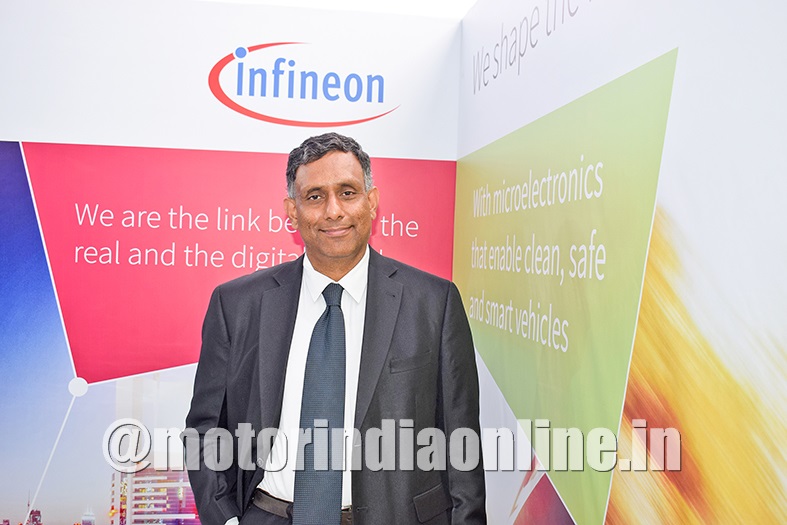
Infineon Technologies
Mr. Girish Kamala, Director & Country Head – SMD, Automotive, Infineon Technologies India Pvt. Ltd., said: “We are showcasing the speed sensors and various other sensors to address the legislation of emission and safety. These sensors can be configured for all types of vehicles. The next in line is the lighting solutions. LED will help all OEMs with styling, we have showcased a 2-wheeler light but again we can produce for all vehicles and not just exterior we can support OEMs with interior. We develop and sell the LED drivers that help in controlling various LED.”
Infineon, whose manufacturing happens at various locations around the world like the US, Europe, China, Malaysia and Singapore, does have a development center here in India. There communication at SIAT was to work with companies wanting to get into automotive electronics. “We have a lot of companies here in Pune who want to get into electronics and we will want to work with them and help them achieve their goals, be it in AC DC, DC DC. We want to be the building block of the entire solution they seek. We can provide them chips for them to create the AC DC DC DC solutions, inverter, Battery Management Solutions (BMS), etc. We work with various customers and help them get the proof of concept and help them customize it for their application,” he said.
Certain components that are made for two-wheelers can also be used for the passenger cars and commercial vehicles. “In the end a micro controller is a processing unit. Depending on the application like safety, power-train, connectivity we have the expertise to configure as per the vehicle requirement,” signed off Mr. Kamala.
SEG Automotive enabling transformation towards greener mobility
Automotive company for Starters, component for Electrification and Generators (SEG Automotive), carved out of the Bosch group, began its independent operation in 2018. “We started our independent operation from Stuttgart, Germany and under the Zhengzhou Coal Mining Machinery Group (ZMJ) of China. Our primary task was to ensure that the customer trust with SEG in starters, components and generators is maintained and improved. The result is that we have out-beaten the market significantly when it comes to trust and confidence in our products,” informed Mr. Anil Kumar M.R., Managing Director & President, SEG Automotive India Private Ltd.
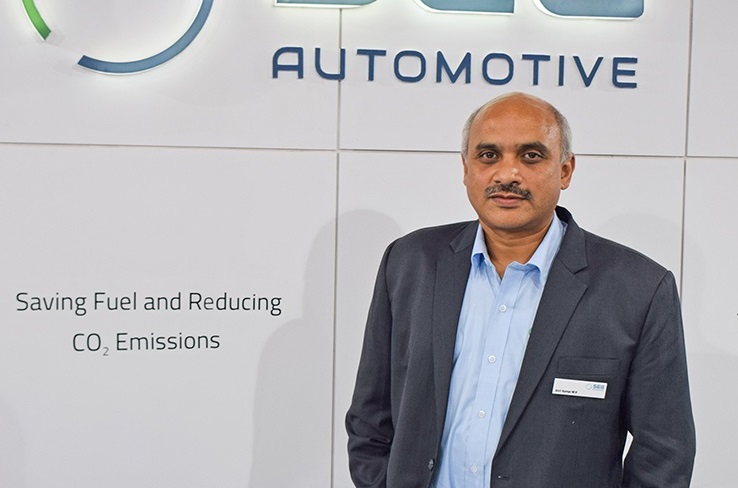
SEG who is considered as the pioneers in terms of Start / Stop technology, offers solutions for the CAFE targets specified by the government – contributing towards a cleaner greener planet. “We were the first movers in India for introducing Start / Stop technology in 2008, however, it was mostly fitted in larger cars. The new SC60 Start / Stop starter motor is developed specifically with the Indian market in mind for smaller combustion engines: it is amongst the smallest of its kind in the world and able to fit in compact cars, yet it provides up to 1.2kW starting power,” he said.
Another product on display to reduce CO2 are the high efficiency generators for any power requirements, which keep the vehicle’s electrical system stable and reduce CO2 emissions and fuel consumption. The modular efficiency features in generators comes as an easy option for enhancing generator’s efficiency, thereby saving fuel and reducing CO2 emissions. On the commercial vehicles front the company introduced the blow air last year, which requires higher currents with higher efficiency. The power has gone upto 100 Amps and is capable to cater to all the commercial vehicles across the board in India. “We have also launched a highly reliable starter motors, going upto 400,000 kms and goes upto 13 ltrs engines. One of the USPs of our product is that all of them are scale able to different configuration can be achieved for different vehicle requirements. Apart from this, we have the 48V hybrid machine, where the CO2 reduction can go upto 15 per cent with start / stop fuction uilt inside it – a starter and a generator in one unit,” Mr. Anil Kumar added.
SEG also showcased a full electric motor for the e-rickshaws, setting new standards in terms of efficiency and durability. The new efficient synchronous motor, co-developed between German and Indian engineering, is based on advanced technology instead of a BLDC (brush less DC) motor. He elaborated: “We are already doing a few trials with OEMs and this will be our entry into the fastest growing market and we can scale this up to the e-autos. Normally the e-rickshaws is up to 25 kms per hour whereas the e-auto can go upto 45 kms per hour and we can cater to both ICAT specifications, as the former is for within the city where high-speed is not required and the power rating too is at 1 / 1.5 KW whereas the latter is anywhere between 5 to 7 KW.”
SEG Automotive will be manufacturing the e-motors for three wheelers locally in India for the domestic and overseas market. Thus, the company is actively shaping the automobile industry’s journey from the combustion engine to electrification by delivering efficient solutions for CO2 reduction – regardless of the powertrain.
Padmini VNA’s reliable energy efficient products
Padmini VNA Mechatronics showcased panoramic range of energy efficient & reliable components that enable contemporary vehicles to provide more performance with less fuel consumption & current emission norms. The company caters to a vast range of components spanning every domain of emission control system while keeping in concern cost effectiveness and better efficiency.
Speaking to MOTORINDIA, Mr. Kabir Bhandari, Managing Director, Padmini VNA Mechatronics, revealed: “Everything we do is aimed at reducing CO2 emissions. We are doing so with our EGR valves, intake throttle valves, turbo charger valves, SCR pumps, control valves, transmission oil pumps, accumulators, hydraulic solutions for transformers and involved in hybrid solutions brushless motors, water pumps BLDC operated EGR and intake throttle valve, giving much better life than DC Motors so we have got very good products for BS-VI.
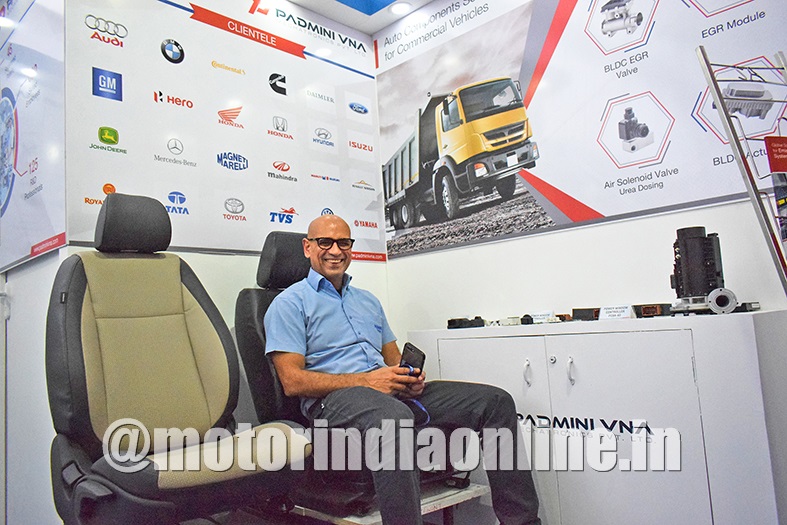
Crediting its success to the company’s quest for innovation, Mr. Bhandari added: “We have a total of 45 patents and that is testimony to the engineers in our design and development team, which constitutes to over 50 per cent of our total employee strength. The portfolio of patents includes products that are the first of its kind such as the dual purge valve, the world’s most efficient class of vacuum pumps and a high efficiency seat cooling system, unique in its category.”
Headquartered in India but to established business development and engineering support, Padmini VNA has presence in Europe, the US, China and Germany. Ask him about the move towards electric vehicles in India and their products for the same, he added: “Electrification looks like a final goal amid competing technologies but hybrids should be the first stepping stone in India. Hybrids will carry over for next 8-10 years and then, even while electric will happen, it will not be cheaper, the competing technologies will co-exist. We have hardware and software design capabilities in house to cater to various demands. We have got good products for hybrids and have acquired business in China, North America and Europe with premium German customers.” Given the wide acceptance of their products globally, Mr. Bhandari believes by 2021 more than 50 per cent of its business will be from exports.
Weiss Technik quality in testing machines & services
One of world’s leading manufacturers of equipment for environmental simulation, heat technology, air-conditioning technology and solutions for pharmaceutical technology, Weiss Technik showcased its wide range of testing equipment and related services. In automotive space, the company is known to support from component to finished product requirements.
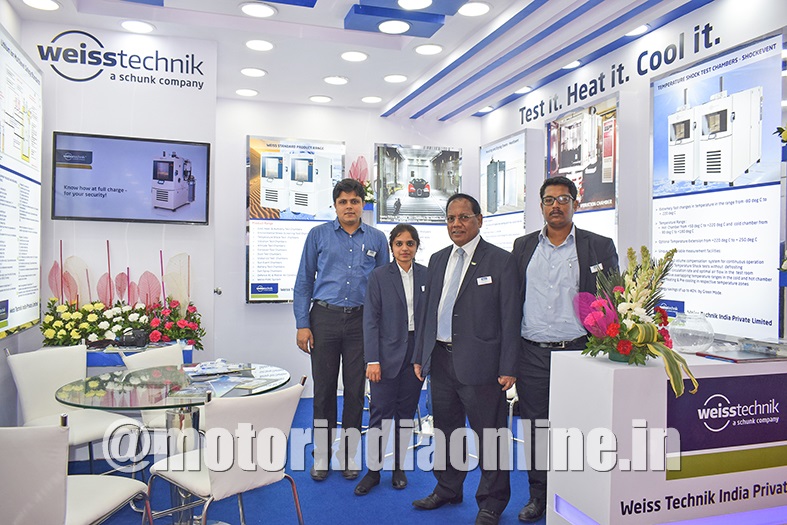
Speaking to us Mr. M. A. Gaffar, Managing Director, Weiss Technik India, said: “Electromobility is extremely important to Weiss Technik as our testing cabinets and chambers are used to test electric vehicles and individual components contained in these vehicles. We are showcasing our products for safety testing for Li-ion batteries as we have the majority market share in the world towards the same. It is understood that for a Li-ion to perform on an optimum level and an optimum energy density it has to function between 25 degrees to 35 degree Celsius. Li-ion being an inherently exothermic process, as the temperature increases, it tends towards, uncontrollable disintegration of Li-ion. We provide systems which can control and monitor the same, so that it performs at an optimum level on road or even at stationary condition.”
The company who has been a veteran in the industry has been committed to the changing need of the automotive industry. Weiss Technik India Ltd., a distribution and service subsidiary of Weiss Umwelttechnik GmbH, started its operations in 2011 and its product portfolio includes all standard environmental simulation devices manufactured at the Weistechnik production sites in Germany.
“Equipped with a wide range of different test chambers, our training centre demonstrates the diverse properties of the devices, tests products and provides regular training courses for the service team. Whether it is selling the machine or working with clients on project to project basis, we are there for the customer’s requirement, informed Mr. Gaffar.
Madhura’s impressive presence in e-mobility space
Madhura Power Technologies displayed solutions for electric/hybrid vehicles and diesel vehicles. The electric vehicle products showcased were E-Powertrain, BMS, OB charger, DC-DC converter & battery management system. For diesel vehicles, electronic engine speed governor, engine controller, electronic throttles, oil condition sensor, position sensor were presented.
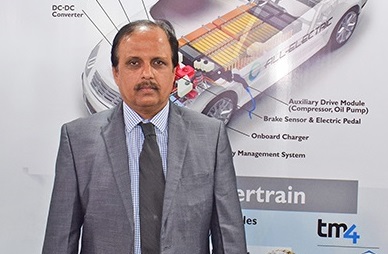
Mr. Ram Shinde, Director, said: “E-mobility is the future and we are confident of governments intention to make at least 30 per cent vehicle electric by 2030. We work as a system integrator as people are looking for integrated solutions, instead of buying the hardware separately, with single point responsibility. We select right components for the customer with right package and help them with installation commissioning and we also undertake training and warranty services. We pride in working with all the leading OEMs in India and also with ARAI on project to project basis.”
Engaged in design, supply, and support of advanced technology like electrical, electro-mechanical & electronic products, Madhura’s application covers electrical, automobile & power industry. “We are into controls & automation of engines, generators and vehicles and specialize in offering custom built solutions. We serve Asia, Europe, Middle East and the US through Indian head office and our associates based in Thailand, Malaysia, the UAE, Bangladesh and Iraq,” said Mr. Shinde.
